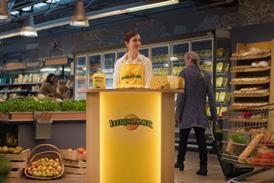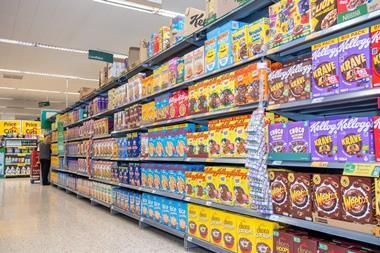
As we reflect on 2021, it’s fair to say we faced our fair share of challenges as a nation. The ongoing impact of Covid-19, a volatile job market, and increasing concerns about the future of our planet all had wide-ranging implications at both a business and an individual level, and will continue to do so in 2022.
Many of these challenges shone a spotlight on the food we eat and some of the issues in our wider food system. The climate change crisis, for example, has forced many people to think more carefully about what they eat. Many are considering more plant-based diets and the environmental and ethical implications of food choices. The pandemic, on the other hand, has highlighted the importance of a healthy diet and body weight.
Sadly, we are also increasingly seeing the longer-term impact the pandemic is having on those most vulnerable in society. Food banks have reported soaring demand and this could worsen in the coming months as families feel the effect of rising household costs.
With all of the above in mind, there has never been a more important time to focus on food and the challenge of enabling everyone to not only eat well but crucially at affordable prices. That’s why at Birds Eye we decided to launch our Better Health Impact report, which aims to provide an overview of the changes in the nutritional health of the nation from 2010 to 2020, as well as a snapshot of what UK consumers are saying about their health today.
One of the most exciting things we found as part of our research is that there is a golden opportunity for those of us in the industry to help the nation get healthier. Indeed, over half of consumers (58%) say they have more interest in eating healthily than they did a decade ago. Yet one in five still rate their diet as not healthy. This suggests that consumers are motivated but are struggling to translate good intentions into a healthier reality.
So, what can the industry do to help? Well, to start with, it’s clear there is still some confusion among consumers about what a healthy diet is. Over a third of consumers are still not confident they know the difference between the different types of fat, almost a third never check nutrition labels, and only 12% know that the recommended daily intake of fruit & vegetables can be achieved by eating fresh or frozen options. As a result, more than two thirds of consumers don’t regularly eat at least five portions of fruit & vegetables a day. This means brands and retailers can play a role by providing engaging information for consumers and signposting them to healthier options.
We know some consumers find it hard to make healthier choices so now, more than ever before, the food industry needs to do it all it can to gently nudge people towards healthier, more sustainable diets. At the heart of this, we must ensure that healthy and sustainable products are accessible and affordable. If the industry can come together, we have a real opportunity to improve the health of the nation over the next decade and beyond.



















No comments yet